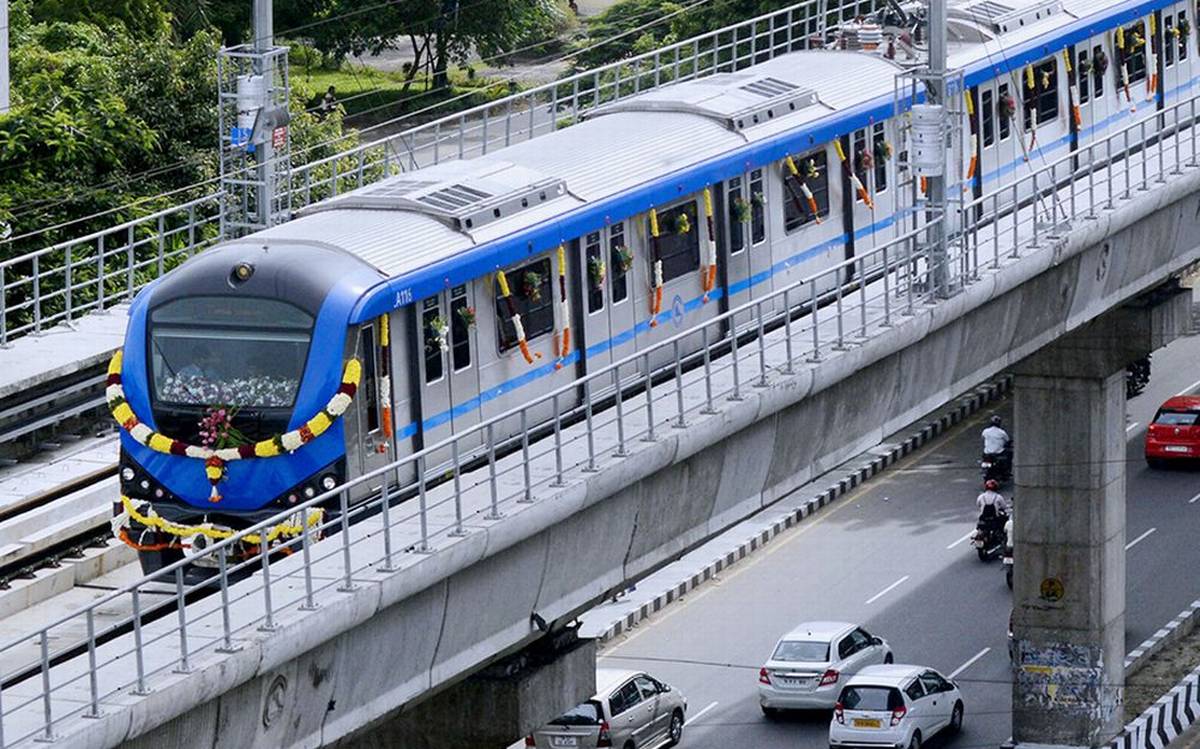
14
Dec
Chennai Metro Expansion: Transforming Urban Mobility and the Future of Commuting
Over the last 10 years, Chennai Metro has made remarkable progress in transforming the city's transportation infrastructure. The Chennai Metro project was conceived as a solution to tackle the city's growing traffic congestion, reduce pollution, and offer a more sustainable, eco-friendly alternative to conventional transportation. With both completed and ongoing expansions, the metro system is set to become a crucial part of Chennai's urban mobility and future development.
Phase 1: Laying the Foundation
The initial phase of Chennai Metro, which was completed in 2019, spanned 45.1 km and linked key areas within Chennai. This phase connected Koyambedu (a bustling commercial hub) to Alandur, and the line also ran from St. Thomas Mount to Chennai International Airport, covering vital locations. These routes served thousands of commuters daily, offering a faster, more reliable alternative to crowded roads. The metro system has become an essential transport option, helping to alleviate traffic bottlenecks and reduce pollution by shifting a significant number of commuters from private vehicles to public transit.
Key stations on Phase 1:
- Koyambedu (commercial and transit hub)
- Tidel Park (IT hub)
- Alandur (connection to the airport)
- Chennai International Airport (for domestic and international travel)
Phase 2: Expanding Reach Across Chennai
Building on the success of Phase 1, Phase 2 of the Chennai Metro project will expand the metro network by an additional 118.9 km. Scheduled for completion in stages, Phase 2 is expected to open fully by 2026. This expansion will further enhance connectivity across the city, linking suburban areas to the city center and significantly reducing commute times.
Key Routes in Phase 2:
- Madhavaram to Siruseri: Connecting critical suburban locations and linking areas like Tambaram, Velachery, Porur, and Srinivasa Nagar to the city's business hubs.
- Nehru Park to Tidel Park: A crucial line linking commercial and IT districts, this route will offer better access to the growing number of office-goers and professionals in these areas.
- Chennai Central (connecting to the city’s main railway station), Tambaram, and other suburban areas: This extension will link busy railway stations and provide easier access to residential neighborhoods and key business districts.
With more than 50 new stations planned, Phase 2 will ease congestion on the roads and provide a cleaner alternative for daily commuters.
Key Features of the Chennai Metro Expansion
-
Improved Connectivity: The expanded routes will connect key business, residential, and tourist areas across the city, making travel more convenient. Commuters from suburban areas like Tambaram, Velachery, and Porur will enjoy reduced travel times and better access to the city’s main hubs.
-
Sustainability and Eco-Friendliness: The metro system is powered by electricity, reducing the city’s carbon footprint and dependence on polluting vehicles. The shift to public transport will contribute to cleaner air and less traffic congestion, aligning with Chennai’s environmental goals.
-
Modern Infrastructure: The new metro stations will feature state-of-the-art facilities, including free Wi-Fi, high-speed elevators, escalators, and better parking options. The stations will also be designed to be more accessible to people with disabilities, ensuring that everyone can use the metro system comfortably.
-
Integration with Other Modes of Transport: A crucial component of Phase 2 is integrating the metro system with other forms of public transport, including buses and suburban trains. This integration will make commuting even more efficient, reducing the need for private vehicles.
The Future of Chennai Metro: Transforming Commuting in the City
The Chennai Metro’s continued expansion is part of a larger vision to address the city’s transportation challenges and provide sustainable, efficient mobility for its residents. With Phase 2 expected to serve more than 3 lakh passengers daily once fully operational, the metro is set to reduce traffic congestion significantly, offering an alternative to the heavily burdened road networks.
The future of Chennai Metro also lies in its potential to stimulate local economies. As the metro network expands, there will be increased opportunities for real estate development, business growth, and improved local economies in previously underserved suburban areas. The metro will provide an eco-friendly transportation option, especially as the city moves toward greener, more sustainable growth.
Conclusion: A Game-Changer for Chennai
The expansion of Chennai Metro is a game-changer for the city. As it continues to grow, the metro will become a cornerstone of Chennai's urban infrastructure, improving the lives of millions of residents and visitors. By reducing traffic congestion, promoting eco-friendly transit options, and improving accessibility across the city, the metro project is laying the foundation for a more sustainable and livable Chennai.
With the ongoing work in Phase 2, Chennai’s metro system is well on its way to becoming a model for other Indian cities grappling with similar urban mobility challenges. The future of urban transport in Chennai is bright, and the metro will undoubtedly be at the heart of that transformation, shaping the city’s future for decades to come.
Share This News


Comments